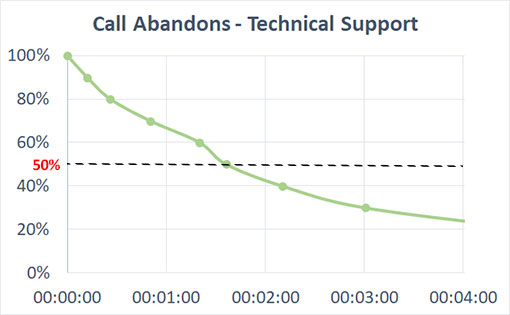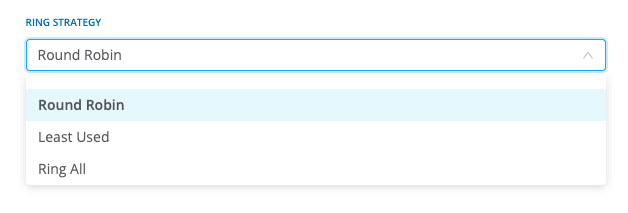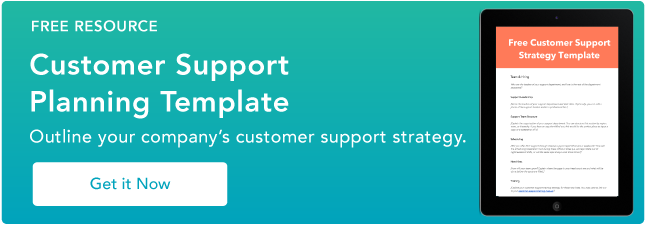Did you know the average person spends over one thousand hours of their life on hold?


According to RingCentral, most people will spend around 40 days of their life waiting on hold with a call center. That means you'll be on hold for the same amount of time it takes to grow a summer squash.
The average call center hold time is roughly 13 minutes, and most people are willing to wait 2-3 minutes on hold before getting upset. However, 57% of customers find long hold times to be a frustrating part of the service experience. And, as the chart below shows, long holds lead to higher call abandonment rates as well as potential customer churn.

But, that's not all. If you can't find solutions quickly for your customers, they'll tell their peers and write reviews letting other people know that your support line isn't worth the wait.
If you want to improve the customer experience and reduce hold times at your call center, read on for a list of handy tips you can use with your support team.
→ Download Now: 45 Customer Service Scripting Templates
Tips For Shortening Long Hold Times
- Create and Update Your Knowledge Base.
- Provide Alternative Customer Support Channels.
- Offer a Callback Service.
- Prioritize Specific Call Center Metrics.
- Notify Customers About Forseeable Surges.
- Adopt an Integrated Voice Response (IVR) System.
- Consider Outsourcing Your Call Center.
- Review Your Call Routing Strategy.
- Encourage Agents to Make Small Talk.
- Give Agents More Decision-Making Authority.
1. Create and Update Your Knowledge Base.
When it comes to reducing long hold times, your knowledge base is a great place to start. If you don't have one, it's a section of your website dedicated to logging and publishing common troubleshooting steps. Rather than waiting on hold when they need help, customers can refer to this resource as an alternative to calling your business.
If you already have a knowledge base, then it's important to continuously update it as you discover new solutions. If your company rolls out new products and services, your knowledge base should stay up to date as well so customers can use it to support your newest products.
You should also encourage customers to use your knowledge base if you know a solution is recorded there. This will train your customers to reference your knowledge base before they call your support line.
2. Provide Alternative Customer Support Channels.
A direct way to reduce hold times is to add additional support channels to your service arsenal. If you solely offer phone support, consider adding email or live chat to your services as well. Or, you can turn to social media as an affordable and efficient medium to support your customers.
Whichever you choose, make sure those channels are as proficient as your call center. If they're not up to par, customers won't see them as a reliable support option. You'll end up wasting resources monitoring unused channels while your call center continues to receive the same volume of cases.
3. Offer a Callback Service.
You can also avoid a hold altogether by offering a callback service. Callbacks schedule a time for agents to call the customer instead of having them wait next to the phone until your agent is ready. This lets customers go about their day rather than tethering them to an hour-long hold.

4. Prioritize Specific Call Center Metrics.
While there are plenty of useful call center metrics, there are a few in particular that can help you reduce long hold times.
Average Handling Time (AHT)
AHT measures the amount of time it takes for an agent to complete a call once they're connected to a customer. If you can reduce this average, your hold times while on call should shorten as well.
Call Availability
Call availability tells you how often your agents are available to take calls within their expected working hours. This includes time spent speaking with customers and any time away from their computers during their shifts. Placing a focus on this metric will hold reps accountable to follow their intended schedule, ensuring your call center is properly staffed during peak call times.
Service Level
Service level records the percentage of calls answered within a given time period. This metric is effective because it allows you to set a goal for your team to reach each quarter. It's a clear and direct benchmark that you can use to motivate your customer service team.
5. Notify Customers About Forseeable Surges.
Sometimes long holds are unavoidable. For example, if it's around the holidays or during the busy part of your company's season, then you may just experience a higher number of calls than usual.
In these cases, it's important to get out in front of a customer service surge if you think it will affect your team's performance. You can publish a message on your website, send an email via your company's newsletter, or add a short recording to your hold line so customers know how long of a wait to expect. If it's longer than usual, customers can call back later or reach out via another channel instead of aimlessly waiting on hold.
6. Adopt an Integrated Voice Response (IVR) System.
If your call center's strategy involves a lot of transfers between departments, then you may want to adopt an integrated voice response (IVR) system to reduce some of the legwork. Rather than manually routing a customer to the correct department or specialist, an IVR system does this automatically by offering customers a series of options as soon as they call your support line. Customers then select the number that best fits their needs and they're connected with an agent who specializes in their specific problem.
Not only does this reduce long hold times by offering an immediate response, but it also improves the customer experience by giving users a clear and direct path to their solution. For example, if a customer has a billing question, all they have to do is select “3” and they'll be transferred to someone in your billing department. This is a much better experience than being connected with an agent only to be told that you need to be sent elsewhere for a solution.
7. Consider Outsourcing Your Call Center.
For some businesses, it may make more sense to outsource your operations so you can focus on other customer service initiatives. Outsourcing your calling center is sometimes more affordable and can lead to consistent results in your support team's performance. This may be the right move to make if you're a growing business, but can't support a large, in-house support team.
8. Review Your Call Routing Strategy.
An IVR system can connect customers to the right service rep, but that's not always enough to reduce your company's hold times. You may need to take it a step further by reviewing your call center's routing strategy and assessing how quickly customers are moving through your support workflow.
There are three different types of call routing strategies you can use.

Round-Robin
Round-robin will pick one agent to assign a case to, but will change it to another agent if the call isn't answered within a given time. This ensures calls aren't stacked up in one rep's queue if they're working on a long call.
Longest Wait
This system routes calls to agents who have been waiting the longest for a new case. This is ideal for companies that use the same frontline reps to answer all of their customer inquiries because it ensures calls are distributed immediately once a rep is available.
Ring-All
Ring-all is a system where all of your calls are routed to your entire customer support team. Whoever is available to take the call first is the one who helps the customer. This is perfect for small customer service departments that handle only a few cases each day.
9. Encourage Agents to Make Small Talk.
One simple solution to long hold times is encouraging agents to make small talk instead of putting customers on hold. Even though it may feel awkward, asking the customer about their day or talking about the weather is an easy way to cut down hold times. And, it's also a nice way to enhance the customer experience by showing interest in your customers beyond their support cases.
10. Give Agents More Decision-Making Authority.
A common bottleneck for support reps is having the authority to make decisions in the moment. Sometimes the line isn't always clear and it's up to the agent to make the final call on whether to put a customer on hold or to perform the requested action. In these cases, how management empowers its employees makes a major difference in how quickly a customer receives a response.
If you encourage reps to make these decisions on their own, they'll spend less time seeking out management for clarity. This will make your team appear more competent and will get customers their solutions faster. Even if your team makes a few mistakes along the way, customers will be happy so long as you put their needs first.
For more ways to improve your call center, check out this list of call center software.
